Take the ferry to Heimaey
A warm breakfast of oatmeal and coffee was made thanks to first warming te fuel then boiling the water.
We planned to take the ferry over to the island of Heimaey in Vestmannaeyjar, the Westman Isles, and stay the evening.
First thing after breakfast though was a short detour to a waterfall just a few kilometers south of the campground, Aegissidufoss.
This was the first time we arrived at a falls and didn't find tourists poking around already. It seems that if a site is at all off the beaten path, advertised in the guidebooks, then there were generally no tourists around.
A fisherman was there just before us, angling a bit, but left as we arrived at the river itself.
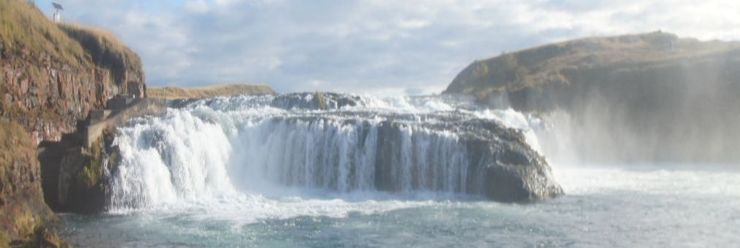
On the way back from the falls, we met this Fabio lookalike horse.
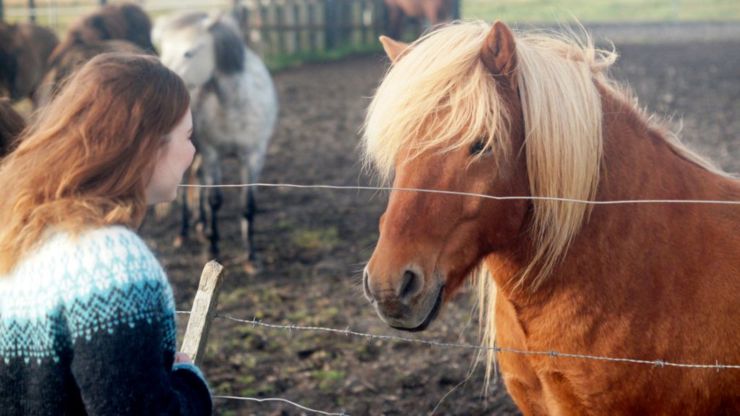
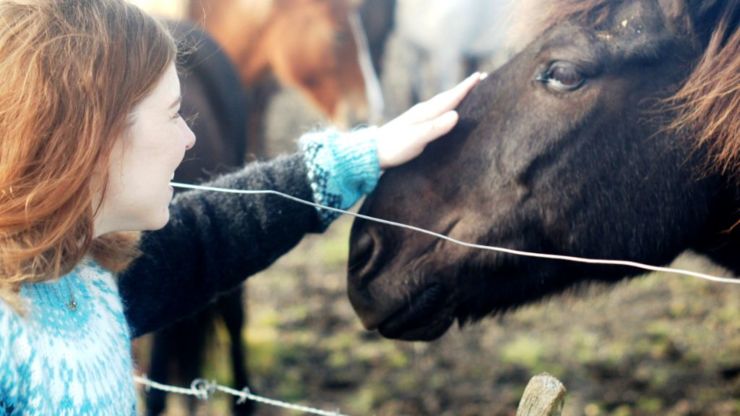
We took the time to pet the horses, as you do, and then headed toward the southeast again. We secure space on the ferry leaving in an hour, and so took the time to have a snack back at the head of the road by the giant puffin, and see some swans hanging out in the river nearby.


Finding a campsite
Once we arrived at the island we took a quick tour around, and dropped in to the campsite Herjolfsdalur, a beautiful spot in the center of a horseshoe of mountains. The cliffs up top are purported to be great for viewing the puffins, but we were a few weeks too late to see them in numbers, as they all leave for the season around september when it begins to get cold, returning to sea or back to Newfoundland.
Nobody at the desk when we had a look in, so we parked the Duster in an open space ( they were all open at this point, seems nobody wants to camp in September ) and tried hiking up the mountain.
We didn't find any signs of puffins at the top, but got a great view overlooking the island, and in the other direction the ocean out towards the west.
After descending we checked out the turf roofed houses in the center of the campsite - it seems like they're in the process of rebuilding them.
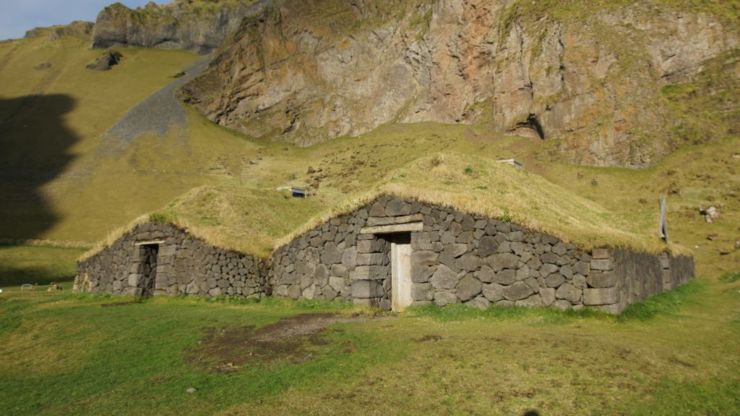 |
|
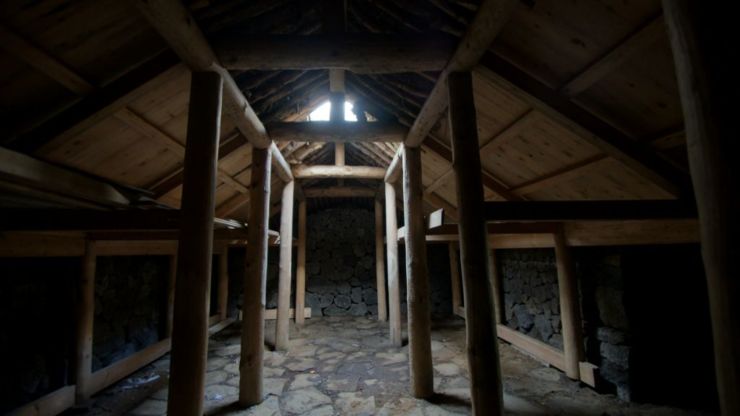 |
We then got to meet up with the campsite's owners, and secured out spot for the evening.
Searching for the elves
Most things on the island shut down at 5, and in the off-season some places aren't even open every day, so there wasn't much to do this evening on the island. We set out for another drive around the island and take in the sights.
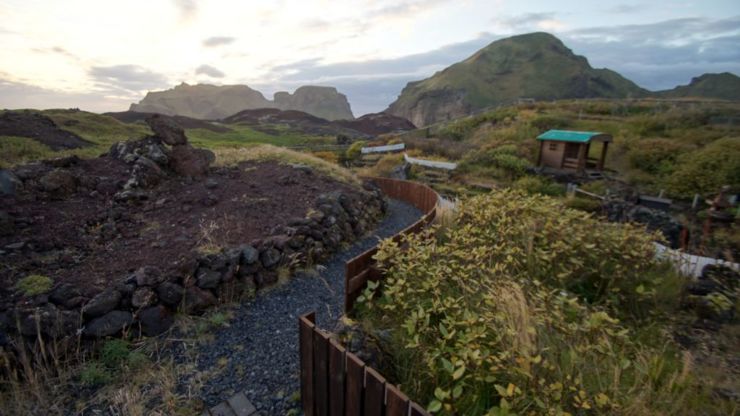
Wandering toward the eastern part of the island the first thing we found was an elf village.
A community garden kept up by volunteers now that the original owners had passed on, the garden was a bit overgrown, and the half dozen or so elf buildings were a bit run down, and so the whole effect in the oncoming twilight was a bit disconcerting, but I can see how it might be charming during the day with some upkeep.
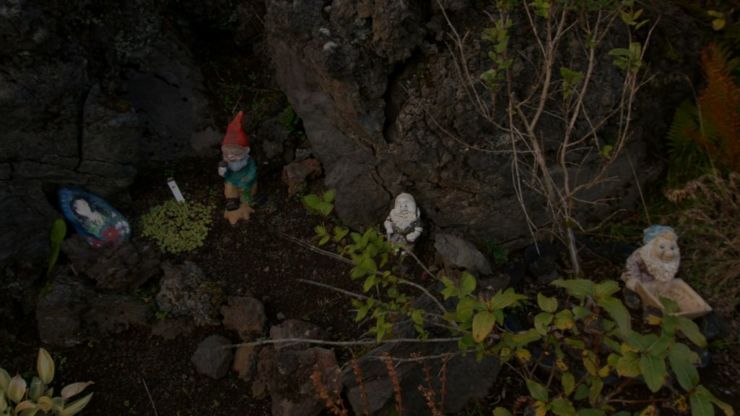 |
|
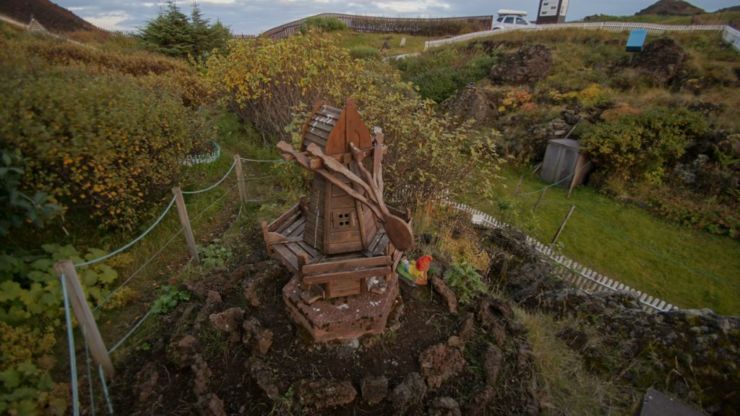 |
We proceeded east out onto the newest section of the island created by the eruption of the Eldfell volcanoe back in 1973. We found this furthest east part of the island was now a quarry, with a lighthouse.

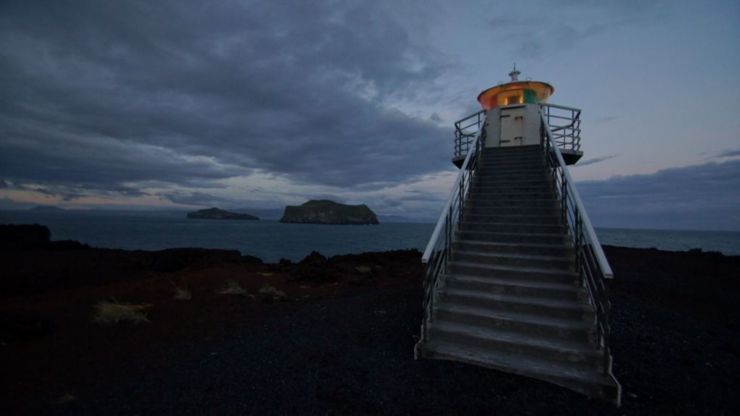
On the way back we saw a little bird by the side of the road - a puffin we thought.
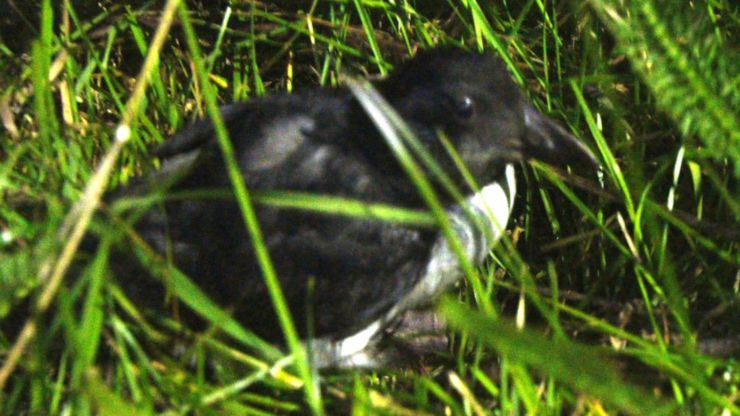
We stopped by the side of the road and went back to see, but were suprised by what we found - it was obviously a small shorebird, but it didn't have any of the markings we expected puffins to have.
It turns out that this was a baby puffin, a puffling. We found out later that despite what we had learned about most other baby animals ( ie, leave them alone ) what we should have done is scooped it up and brought it to the aquarium for them to examine and release into the wild, or possibly nurse back to health. Since the adults had all left, these stragglers are generally, once given a clean bill of health, taken to the south of the island and toss into the sea, so that they take part in the migration to the south before it becomes too cold here.
Luckily, all the islanders know what to do when they find the puffins, all the schoolchildren scour the neighborhoods in search of them to bring back to be checked out and released, and we were told that their numbers have been increasing since they instituted this program, so our friend was likely scooped up in short order and given a checkup and proper sendoff.
We ended up at the opposite end of the island well after nightfall on account of stopping for pufflings.
I took a few minutes to take some nighttime pictures of the waves crashing on the beach.
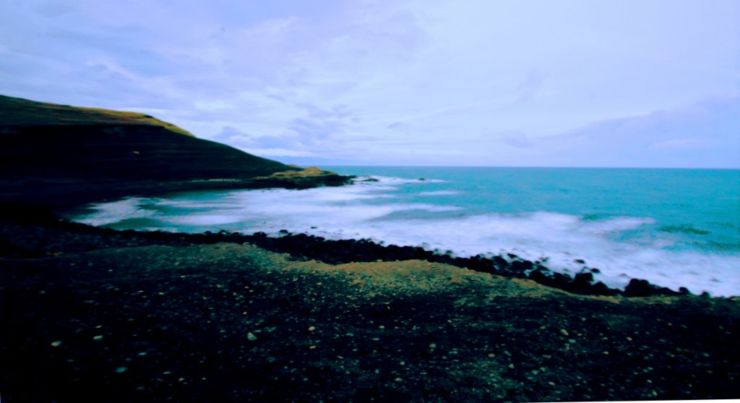
The cold had begun to set in though. This spot in particular, Stórhöfði, was said to be the windiest place in all of Europe, and it was quite windy while we were there. We decided to head back to the shelter of our campsite nestled inbetwen the volcanoes, and come back the next day to have a look around in the daylight.